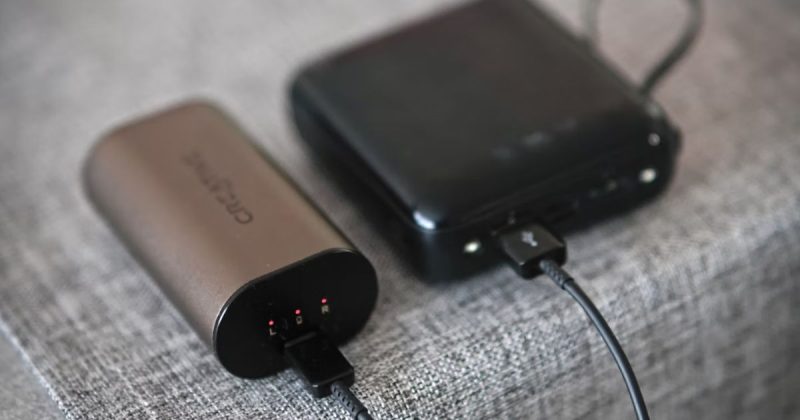In today’s world, where technology has become an integral part of daily life, having a reliable portable power solution is more crucial than ever. Whether it’s for charging devices while on the go, powering tools at work, or keeping your camping gear functional in remote areas, portable power stations, power banks, and generators provide the necessary energy for various activities. Like any device, these power solutions require regular maintenance to function at their best and ensure long-term durability.
This article explores the tips to supercharge portable power life. From understanding how different types of power solutions work to cleaning, storing, and troubleshooting common issues, keeping your portable power station is essential to maximizing its performance and extending its lifespan.
Understanding Portable Power Solutions
Before diving into maintenance, it is essential to understand the various types of portable power solutions available. Each has its specific function, technology, and upkeep needs.
Portable Power Banks
Portable power banks are sleek, travel-friendly devices designed to power up your smaller electronics, such as smartphones, tablets, and laptops, while you’re on the go. They typically store energy in lithium-ion or lithium-polymer batteries, providing a quick recharge boost when you’re on the go. While convenient for travel, these compact chargers typically offer less capacity than their larger counterparts.
Portable Power Stations
A portable power station is a larger, more powerful battery pack that can provide energy for a broader range of devices, including laptops, lights, and even small appliances. These stations typically feature both AC outlets and DC ports, allowing them to charge multiple devices simultaneously. They are usually powered by lithium-ion or lithium-iron phosphate (LiFePO4) batteries, both of which offer long cycle lives.
Portable Generators
Portable generators provide off-grid power, often through gasoline or solar energy, and are used to power larger appliances, such as refrigerators, power tools, or air conditioning units. While they tend to be bulkier and less portable than power banks or stations, they offer higher power outputs over longer periods.
Supercharge Portable Power: 4 Game-Changing Tips
1. Basic Maintenance Principles
Regardless of the type of portable power solution—whether it’s a power station, power bank, or generator—all require regular maintenance to ensure they continue to function correctly and efficiently. Failing to maintain these devices can result in reduced performance, shorter lifespans, and potential malfunctions. Proper care and maintenance are essential to keep them reliable, especially during critical moments when you need them most. Here are some fundamental principles of maintenance that apply to all types of portable power solutions:
Keep It Clean
Dirt, dust, and debris can accumulate on portable power solutions, particularly on vents, connectors, and buttons. This can impair their functionality, cause overheating, or even damage the internal components. Regularly cleaning your device is key to keeping it running smoothly.
- Cleaning Method: Gently wipe the surface with a soft cloth or microfiber towel. For tougher grime around vents or buttons, use compressed air to blow it out. Avoid water or harsh cleaners, as they can harm the electronics.
- Key Areas to Focus On: Pay special attention to the ports where cables are plugged in. Over time, dust can accumulate in the charging ports, resulting in charging issues or connection disruptions. A gentle puff of air or a cotton swab can help safely remove any debris.
2. Proper Storage
Proper storage is crucial for extending the lifespan of your portable power solution. The environment in which you store your device significantly impacts the health of its battery and its capacity to hold a charge over time. Storing it in an ideal setting helps prevent damage from extreme temperatures and humidity, which can degrade the battery and reduce performance.
- Temperature Control: Avoid storing your power solution in environments with extreme temperatures. Both very high and very low temperatures can reduce battery efficiency and even lead to permanent damage. The ideal storage temperature is typically between 32°f (0°c) and 86°f (30°c).
- Battery Charge Level: If you plan to store your portable power solution for an extended period, ensure the battery is partially charged (around 50-60%). Storing the device with a fully charged or completely depleted battery can shorten its lifespan. Many power banks and stations have an automatic charge management system that helps with this.
- Avoid Moisture: Keep your power solutions away from moisture and humidity, as exposure to water can cause corrosion and permanent internal damage.
3. Regular Usage
Even if you don’t use your portable power solution often, it’s important to charge it periodically. This helps keep the battery in good condition and prevents it from losing its charge-holding capacity or becoming inactive over time. Regular use ensures the internal components stay functional and ready when needed.
- Battery Calibration: If your power station or power bank has a built-in battery management system, it may require periodic calibration. This can be achieved by fully charging the device, then completely discharging it, and finally recharging it again. This process helps ensure the internal battery management system remains accurate and functions correctly.
- Exercise the Ports: Plugging devices into the power solution at least once a month ensures that the ports remain functional and the connections don’t degrade. If your solution includes both AC and DC outputs, ensure all ports are used occasionally.
4. Troubleshooting Common Issues
Despite proper care, portable power solutions may occasionally experience issues.
Device Not Charging Properly
If your portable power station or power bank isn’t charging devices effectively, several factors could be at play:
- Dirty or Damaged Ports: Check the ports for any dust or debris that might be interfering with the connection. Use compressed air or a soft brush to clean them thoroughly. If the charging cables show signs of wear, replacing them can often resolve charging issues.
- Overheating: Overheating can trigger thermal protection, which might prevent the power solution from charging correctly. Ensure the device is in a cool, ventilated area while charging. If overheating persists, allow the device to cool completely before attempting to use it again.
- Battery Degradation: If the power solution is older, its battery may have degraded, resulting in reduced capacity and slower charging. Most portable power solutions have a limited battery lifespan, typically ranging from 300 to 1,000 complete charge cycles. If degradation is severe, replacing the battery may be necessary.
Power Station or Power Bank Won’t Turn On
If the power solution doesn’t turn on or respond when you press the power button, consider these troubleshooting steps:
- Check the Charge: Ensure that the power station has enough charge. If the battery is completely drained, it may take several hours to charge before it turns back on.
- Reset the System: Some devices feature a reset button or method; check the user manual for details. Resetting can help resolve software glitches or internal faults.
- Inspect for Damage: Examine the unit for any visible signs of damage, such as cracks, exposed wiring, or water intrusion. If your device is damaged, contact the manufacturer or a qualified repair professional for assistance.
Excessive Noise or Vibrations
While portable generators may produce noise as part of their operation, power stations and power banks are designed to operate quietly. If unusual noise or vibrations are noticed:
- Check for Obstructions: If the device has a fan, ensure it is not blocked by dirt or debris. Cleaning the fan area or giving the device room to breathe can reduce noise.
- Examine the Battery: In some cases, battery swelling can occur, causing internal pressure and noise. If the device is exhibiting unusual sounds or bulging, stop using it immediately and contact the manufacturer for support.
5. Maximizing the Longevity of Your Portable Power Solution
To extend the lifespan of your portable power station, power bank, or generator, consider implementing these essential maintenance practices:
- Avoid Overcharging: Charging your battery beyond the recommended level can strain it, causing it to wear out faster. While most newer devices include safeguards to prevent overcharging, it is still wise to disconnect them once they reach 100% and avoid keeping them plugged in for too long afterward.
- Monitor Battery Health: Some portable power stations feature battery health monitoring capabilities, enabling users to check the condition of their batteries. Monitor these reports to assess if the battery is approaching the end of its lifespan. Replacing the battery before it fails can ensure continued performance.
- Use Solar Panels (When Applicable): For those using solar-powered portable power stations, ensure the solar panels are clean and free from obstructions. Over time, dust and dirt can accumulate, reducing the solar panel’s efficiency. Regularly clean the panels to ensure maximum solar absorption.
- Invest in Protective Cases: Protective cases are essential for keeping your portable power solution safe from physical damage, particularly during travel or outdoor use. A sturdy case will protect your device from impacts, drops, and exposure to dust or moisture.
Ensuring Longevity: Maintaining Your Portable Power Solution
Proper maintenance of a portable power solution is crucial to ensuring optimal performance and extending its lifespan. Whether it’s a power bank, portable power station, or generator, these devices play a crucial role in modern-day living. By following the cleaning, storage, and troubleshooting practices outlined in this guide, users can ensure that their portable power solutions remain reliable, efficient, and long-lasting.
With the growing dependence on portable energy sources, keeping these devices in top condition is more critical than ever. By integrating regular maintenance into your routine, your portable power station will continue to provide the energy needed to power devices, charge gadgets, and support off-grid activities for years to come.





